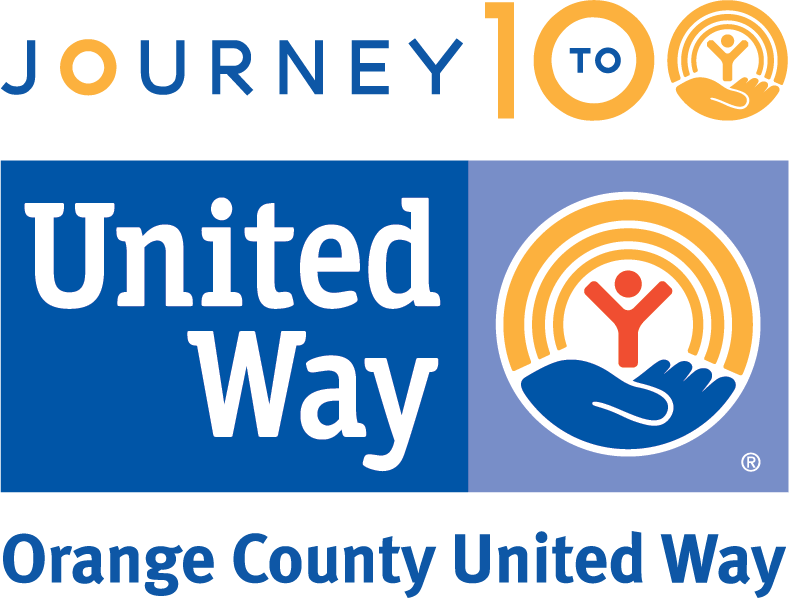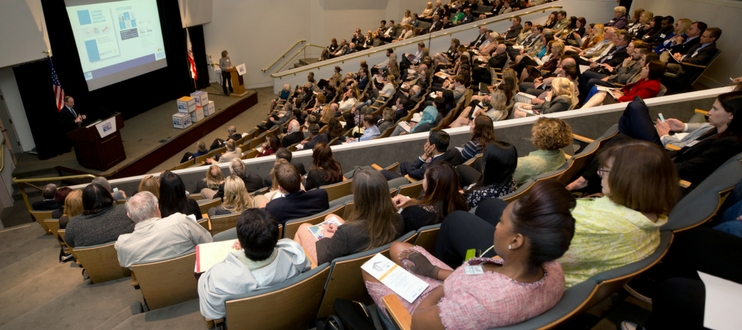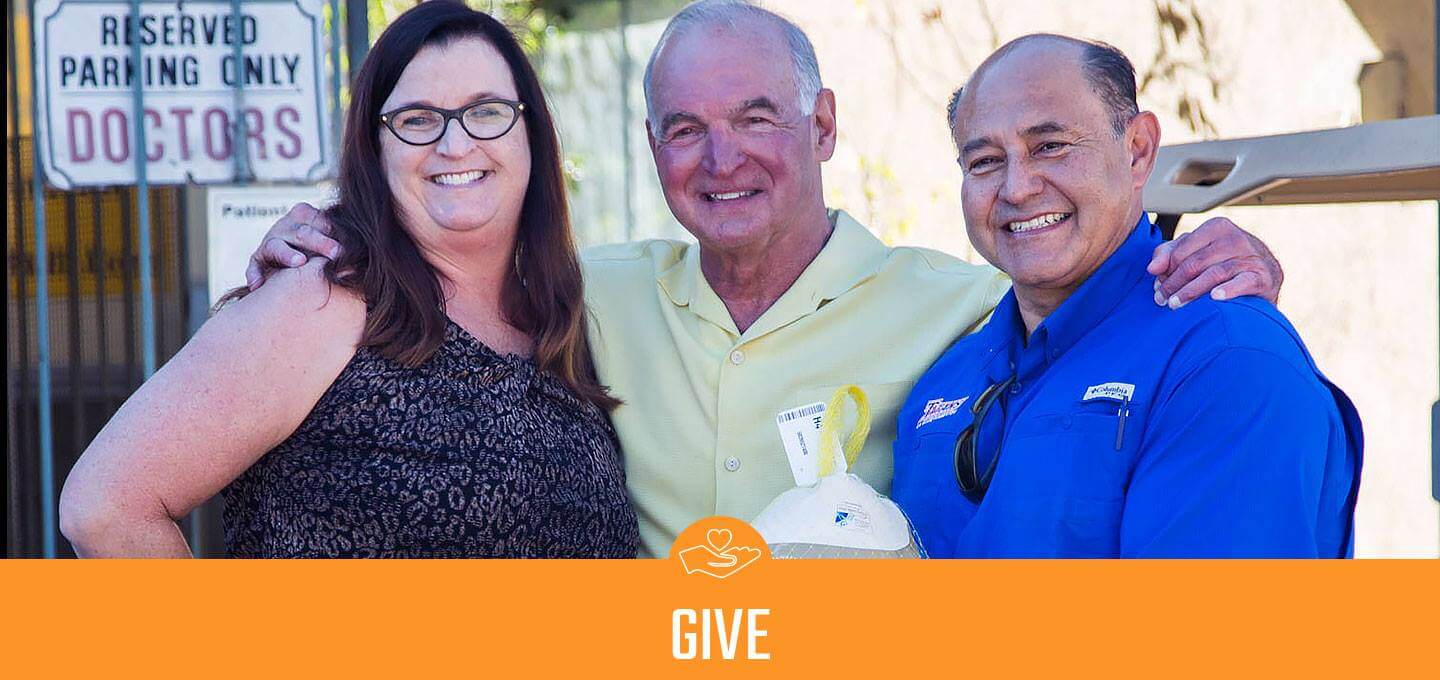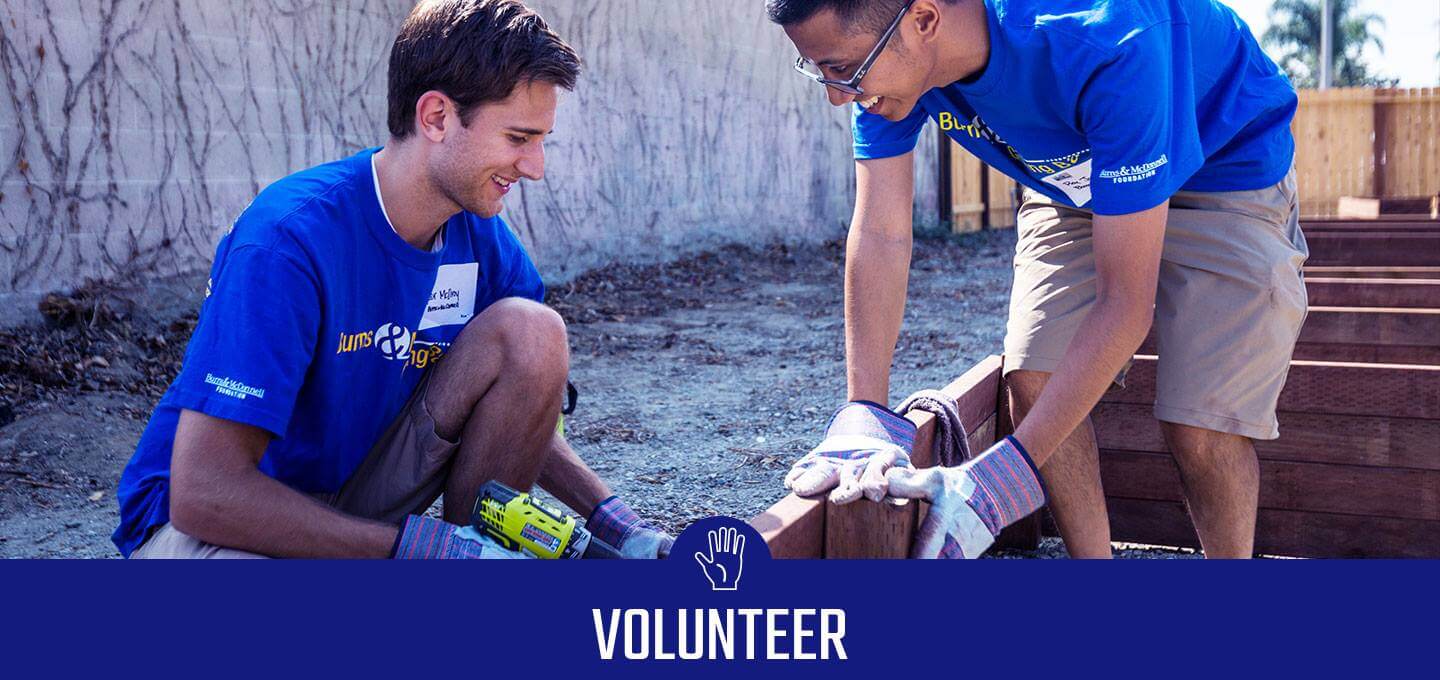Second Annual “FACE 2024” Scorecard Report Unveiled before 200 business, community, government and education leaders
National Alliance to End Homelessness CEO, Nan Roman addresses how communities across the US are finding solutions
Irvine, CA – Orange County United Way provided its second annual “FACE 2024 Scorecard Report” before an audience of more than 200 business, community, government and education leaders gathered at the Beckman Center in Irvine March 7.
During the event, United Way leaders reported that while this year’s snapshot of the conditions facing Orange County families and children in four measured areas are mixed, positive progress has been made that will result in long-term success.
Specifically, United Way announced that the percentage of high school dropouts has decreased by more than one-third in the past four years while the number of financially unstable families has dropped from 39% to 34%. Additionally, the number of obese children has dropped in the past four years. However, that percentage is up slightly from the previous year’s report.
Of greater concern was the percentage of homeless or housing insecure children in Orange County, which continues to rise with the cost of housing.
“High housing costs and low job skill levels are challenging many families and ultimately their children,” explained Carla Vargas, Chief Operating Officer for Orange County United Way. “While the housing needle is moving in the wrong direction, there’s a lot of attention around the issue of homelessness in Orange County and together, we can build momentum and reverse that trend.”
The event was United Way’s second annual update on Orange County’s progress against the 10-year goals laid out in its landmark FACE 2024 communitywide action plan to address the most critical education, income, health and housing challenges facing local families and children.
The Findings
Specific findings in each category included, by category:
Education: The countywide high school dropout rate is down to 5.7% from a high of 9.5% four years earlier. However, dropout rates continue to remain higher than normal in Anaheim, Santa Ana and Garden Grove, as well as among Latino students.
Family Financial Stability: Family financial instability is 34%, down five percentage points from four years earlier and seven below the high of 41% the following year. But instability remains high in neighborhoods in Santa Ana, Anaheim, Westminster, Garden Grove and Fullerton as well as in certain pockets in San Juan Capistrano and San Clemente. In all, one in four Orange County residents continues to live in poverty.
Childhood Obesity: After declining from 34.5% in 2011-12 to 29.2% two years ago, childhood obesity rates increased slightly last year to 30.5%. Nearly one-third of Orange County children remain overweight or obese with too many lacking access to healthy food choices and safe places to play.
Housing Instability: The number of homeless or housing-insecure children has risen from 5.7% to 6.1% in the four-year period ending in 2015-16. High housing costs and low skill levels continue to create headwinds facing too many Orange County families.
Challenges Interconnected
The report indicated that many of the neighborhoods and cities where families are struggling showed significant challenges in all focus area. Challenges related to hunger impacting progress in school, financial struggles impacting housing security, and housing security impacting a child’s educational success. United Way leaders recognized these interconnected challenges early on in the development of the FACE 2024 action plan and knew it would require a holistic solution.
“You can’t fight homelessness without addressing the financial stability of families on the brink, you can’t do well in school if you have no place to live or don’t have enough to eat,” explained United Way President and CEO Max Gardner. “That’s why these goals are interconnected and we continue to be laser focused in a comprehensive manner.”
A Ten-Year Communitywide Effort to Change Community Conditions
The FACE 2024 action plan was developed following a community-wide ascertainment effort that United Way led in 2012 to identify the most critical challenges facing Orange County residents and ultimately pinpoint exactly where human service resources should be targeted.
The 2014 findings revealed that:
- 4,000 Orange County students dropped out of high school each year
- One in four of our residents lived in poverty
- One-third of our children were overweight or obese
- 30,000 of our children were homeless or housing-insecure
To address these community issues, United Way leaders and community partners incorporated a bold set of goals to which the FACE 2024 plan would be measured over a 10-year period. By the year 2024:
- Cutting high school dropout rate in half
- Reducing the percentage of financially unstable families by 25 percent
- Increasing the number of healthy youth by one-third
- Cutting the percentage of homeless and housing insecure children in half
United Way Mobilizing the Community
Critical infrastructure for the FACE 2024 plan includes numerous initiatives and partnerships with organizations, agencies and private companies that have proven over many year to make the greatest impact in the areas of education, income, health and housing. These collaborative efforts, serving as the “boots on the ground,” are making great strides. Some of these include, by category:
Education:
- OC Reads helping Orange County students read at grade level by third grade, a proven milestone on the road to on-time graduation.
- Destination Graduation providing a path on which middle and high school students can achieve success and graduate on time.
- Youth Career Connections linking classroom learning with real-world career experiences by “connecting” students directly to local businesses so they graduate from high school, go to college and graduate career-ready.
Income:
- Job Training Programs connected to industries with higher paying careers.
- Free Tax Prep assistance to low- to middle-income working families with the goal of maximizing tax refunds through the federal and state Earned Income Tax Credit and other similar programs.
- SparkPoint OC Financial Empowerment Centers helping families create step-by-step personal finance plans to tackle their specific needs as well as SparkPoint in Schools expanding the model into the school environments where families are at risk of being homeless.
Health:
- United Way “Healthy Schools” Designation Pilot Program in partnership with the National Alliance for a Healthier Generation and the Orange County Department of Education.
- Food Bank and Waste Not OC Partnerships, increasing access to fresh and healthy food options through unique avenues like school and mobile pantries.
- Community Gardens to increase access to fresh fruits and produce in targeted communities.
- Covered OC convening all local stakeholders working to increase access and enrollment of affordable healthcare.
Housing:
- Rapid Re-housing helping Orange County families with children that are homeless or unstably housed move into permanent, private market affordable housing.
- Support for the bi-annual “Point in Time Count” by mobilizing hundreds of corporate and community volunteers to go out and make sure everyone in our community counts.
- Cost Study of Homelessness was commissioned in partnership with UCI, 2-1-1, Jamboree Housing and the Association of California Cities –Orange County to assess the public costs of homelessness.
“By convening, focusing and mobilizing all of Orange County’s collective resources to tackle these challenges, we can have a tremendous impact on the lives of thousands of Orange County children,” explained Vargas. “We welcome the community’s continued partnership and support to create lasting changes in the lives of Orange County’s families and children.”
Along with United Way’s Vargas and Gardner, the organization’s Board Chair, Sue Parks, CEO of iCount™ Wellness, as well as Tim Clyde, CEO of Katzkin Automotive Leather and Chair of United Way’s Community Impact Cabinet, presented key findings.
The keynote speaker was Nan Roman, President and CEO of the National Alliance to End Homelessness, who provided a unique perspective on homelessness and offered several collaborative tools and solutions that can be incorporated by Orange County leaders.
During her keynote, Roman noted that one of the most significant challenges facing communities in the battle against homelessness is overcoming the myths that too often dominate the public discussion. Roman recognized the other factors at play, but highlighted the simple issue: rents are rising faster than wages so more and more families can’t keep up.
Roman pointed to successes in communities utilizing a variety of coordinated and proven strategies – such as Rapid Re-housing – to equip families with the tools they need to regain their independence and permanently exit the system.
Alcon and AT&T generously sponsored the FACE 2024 Scorecard Report.
For more information about Orange County United Way’s FACE 2024 Scorecard Report, please visit www.unitedwayoc.org/face-2024.
ABOUT ORANGE COUNTY UNITED WAY:
Established in 1924, Orange County United Way fights for the education, health, housing and financial stability of every person in Orange County. Through our 10-year community-wide action plan, “FACE 2024” (an acronym for Fund, Advocate, Collaborate, Educate), by 2024 United Way will cut the high school dropout rate in half, increase healthy youth by one-third, cut the percentage of homeless or unstably housed children and families in half and reduced financial instability by 25%. By mobilizing local businesses, community organizations, governmental agencies and individuals, we make a long-term measurable difference in the lives of local individuals and families. To learn more or to join our movement, visit www.unitedwayoc.org.
NEWS CONTACTS:
Katherine Ransom, Vice President, Marketing and Communications
Orange County United Way 949.263.6176, [email protected]
Michael Suydam
21Strat 949.981.5008, [email protected]
ABOUT ORANGE COUNTY UNITED WAY:
Since 1924, Orange County United Way has been working to improve lives and strengthen our community by mobilizing the caring power of Orange County, by focusing on the building blocks for a good quality of life: Education, Income, Health and Housing. By investing in Orange County’s children, families and individuals, we help them create pathways to self-sufficient futures through education and training. In short, we help people help themselves. Through our 10-year community-wide action plan “FACE 2024” (an acronym for Fund, Advocate, Collaborate, Educate), United Way is mobilizing local businesses, community organizations, governmental agencies and individuals to make a long-term measurable difference in the lives of local individuals and families. To learn more or to join our movement, visit www.unitedwayoc.org.







